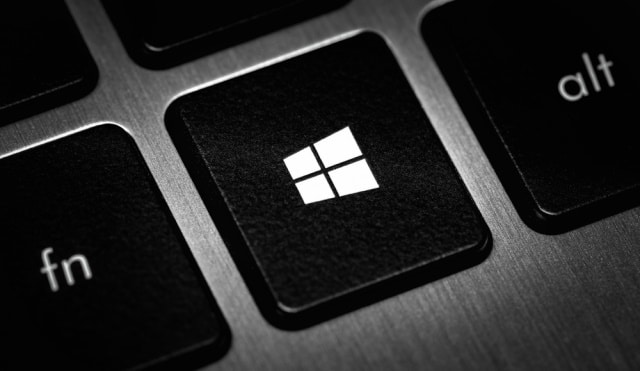Microsoft releases KB5001391 for Windows 10 20H2 and 21H1

Anyone testing out the very latest versions of Windows 10 has a new bug-fixing patch to install. With the release of the KB5001391 update, fixes and changes introduced to the Dev channel now make their way to the Beta and Release Preview channels.
This latest patch sees Microsoft taking Windows 10 20H2 up to build 19042.962 and Windows 10 21H1 up to build 19043.962. It includes a large number of bug fixes, and addresses problems with a profile-related Group Policy, and fixes an issue that caused soaring memory usage by the lsass.exe process, as well as high CPU usage that led to system lockups.
See also:
- Microsoft fixes Windows 10's drive corrupting NTFS denial of service vulnerability
- KB5001330 update for Windows 10 is causing performance problems and other issues
- Microsoft issues KB5001330 and KB5001337 updates for Windows 10, killing off legacy Edge
In addition to a fairly large number of bug fixes, the patch also introduces News and Interests on the taskbar for a wider range of users. The KB5001391 update is gradually building up to general availability for all users; when this happens, it will be an optional "C" release.
In a post on the Windows Insider Blog, Microsoft shares more details about the changes included with the latest update:
- We are rolling out news and interests on the Windows taskbar to Beta and Release Preview rings. This has been available in the Dev Channel, with on-going improvements based on Insider feedback. News and interests on the taskbar make it easy to stay up to date with information at a glance, and we look forward to hearing what you think.
- We fixed an issue that prevents a site from transitioning out of Microsoft Edge IE Mode when expected.
- We fixed an issue that fails to remove mandatory profiles completely when you sign out when using the "Delete cached copies of roaming profiles" Group Policy.
- We fixed an issue that causes blank tiles to appear on the Start menu with names such as "ms-resource:AppName" or "ms-resource:appDisplayName". These blank tiles represent the installed applications and appear for approximately 15 minutes after updating to a newer version of Windows 10. Installing this update prevents these blank tiles from appearing on the Start menu.
- We fixed an issue with the Microsoft Japanese Input Method Editor (IME) that prevents an app’s custom candidate window from displaying correctly.
- We fixed an issue that occurs when you install inventory applications.
- We fixed an issue that includes kernel mode rules for .NET applications in Windows Defender Application Control policies. As a result, the generated policies are significantly larger than necessary.
- We fixed an issue that causes devices to fail Device Health Attestation.
- We fixed an issue that turns off S Mode when you enable System Guard Secure Launch on a system running Windows 10 in S Mode.
- We fixed an issue that causes lsass.exe memory usage to grow until the system becomes unusable. This occurs when Transport Layer Security (TLS) resumes a session.
- We fixed an issue with a race condition between Task Scheduler and the Workstation Service. As a result, users cannot automatically join a hybrid Azure Active Directory (AAD) domain and error 0x80070490 is generated.
- We fixed an issue that causes Azure Active Directory authentication to fail after signing in on Windows Virtual Desktop machines.
- We fixed an issue that causes AAD Work Accounts to unexpectedly disappear from certain apps such Microsoft Teams or Microsoft Office.
- We fixed an issue with a partial Service Connection Point (SCP) configuration that causes dsregcmd.exe to stop working. This issue occurs because of a case-sensitive domain ID name comparison that occurs when joining a hybrid Azure Active Directory domain using single sign-on (SSO).
- We fixed an issue that accidentally triggers hybrid AAD joining when the Group Policy "Register domain-joined computers as devices" is set to DISABLED. For more information, see Post configuration tasks for Hybrid Azure AD join.
- We added the ability to adjust the amount of idle time before a headset goes to sleep in the Settings app for Windows Mixed Reality.
- We fixed an issue that might generate a stop error when Docker containers run with process isolation.
- We fixed an issue that causes automatic enrollment and certificate retrieval to fail with the error, "The parameter is incorrect."
- We fixed an issue that might cause Microsoft Defender Application Guard virtual machines to stop responding when Microsoft Defender Application Guard for Office opens a document. This issue might occur on some devices or in drivers that utilize GPU Hardware Accelerated Scheduling.
- We fixed an issue that prevents some media players from playing content on hybrid devices that are running with dGPU on iGPU displays.
- We fixed an issue with race conditions that cause high CPU usage. As a result, the system stops working and deadlocks occur.
- We fixed an issue with a deadlock in the New Technology File System (NTFS).
- We fixed an issue that causes DWM.exe to stop working in some cases.
- We fixed an issue that might prevent an application screen from working when using a Remote Desktop ActiveX control that is embedded in an HTML page.
- We improved the Windows Server Storage Migration Service by:
- Adding support for migration from NetApp FAS arrays to Windows Servers and clusters.
- Resolving multiple issues and improving reliability.
- For more information, see Storage Migration Service overview.
